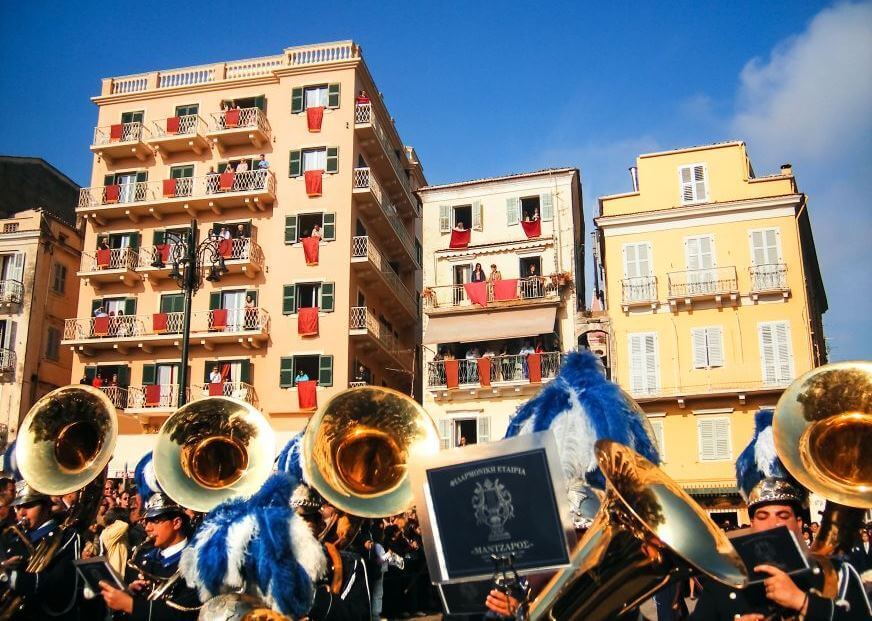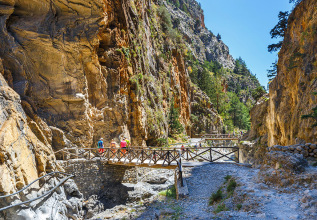Easter in Greece

Joy and spiritual regeneration
Spring is here at last, and with it comes Easter, a religious celebration that has to do with the victory of life over death, spreading the happy message around the world.
Here’s a glimpse of Greek Easter preparations and customs. During the Holy Week, church icons, stands and chandeliers are dressed in black and purple ribbons, as a sign of mourning, and services take place twice a day. Early on Good Friday morning, girls and young ladies go to the church to dress Epitaphios (an embroidered cloth icon of the dead body of Christ lying on a wooden bier with a mounted carved canopy). Flowers of all colours and shapes are fixed together so as to cover the structure. After the evening service, Epitaphios is carried in procession along the streets of the parish, with the priests and chanters following it and singing hymns, as well as the congregation who carry a brown lit candle along the way. The procession returns to the church to conclude the evening service. The sadness comes to an end on Holy Saturday morning, when the colours of ribbons in the churches are changed from black and purple to festive white and red. During the Easter midnight Mass, as soon as the priest chants ‘Christos Anesti’ (Christ is Risen), fireworks go off outside the churches. The skies are set ablaze, and everyone holds a white lit candle and repeats ‘Christos Anesti’ to their neighbours. Family members kiss each other and exchange holiday wishes.
If you choose to spend Easter in Greece, visit Corfu, a place where both orthodox and catholic rites and traditions are kept. After the Holy Saturday morning Mass, which is called ‘proti Anastasi’ (first Resurrection), a long red piece of cloth is placed to hang from the balconies or window sills of all houses. The local Philharmonic Bands play happy Easter tunes and marches, as they walk down kantounia (Old Town streets) and the locals drop ‘botides’ (clay jugs filled with water and decorated with red ribbons) off their house windows. The streets are filled with people including visitors who watch, from a safe distance, as the jugs fall and get smashed on the ground. Make sure you take one of those broken pieces with you at home, for luck! In Leonidio, Peloponnese, during the Easter midnight Mass, people gather in the main town square with their home-made balloons (called fanarakia). As soon as ‘Christos Anesti’ is heard through the church loudspeakers, and the bells ring, they light the oil-soaked piece of cloth placed at the bottom of their fanarakia. The balloons of various shapes take off slowly, filling the night sky with little flames. It’s a sight not to be missed!
There are also many tasty traditions to be tried, as savoury and sweet dishes are prepared in Greek households for the coming feast. Tsoureki (a fragrant Easter brioche) and lamprokouloura (Easter cookies) are baked, and hard-boiled eggs are dyed red. After the midnight Mass, an egg-cracking game is played: the family gathers around the table, each member holding a red egg, and they crack it with that of their neighbour’s, speaking ‘Christos Anesti’ out loud. The person whose egg remains intact after everyone else’s has cracked, is the winner! Mageiritsa is the main dish served after that; it is made with chopped lamb or kid offal cooked in a soup with vegetables and a creamy egg and lemon sauce. On Easter Sunday, barbecue smells waft through the air. A lamb or kid is roasted on the spit in the garden, or baked in the oven. Traditional feasting and singing takes place all day long. People call on friends and relatives for some more egg-cracking games.
You’re invited to join the festivities.


